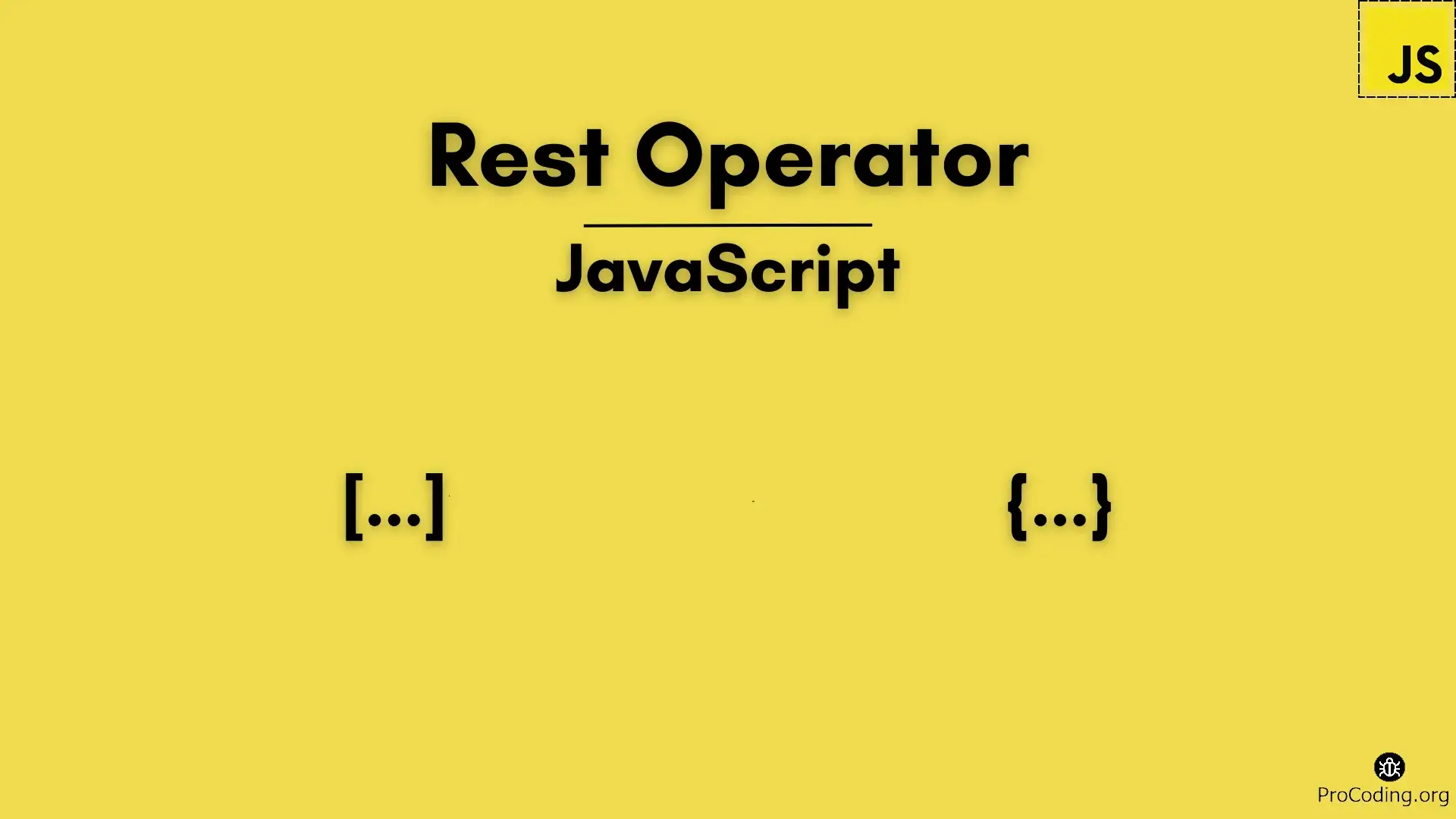Rest operator in JavaScript
The rest operator (denoted by ...) is one of the modern JavaScript features introduced in ES6 (ECMAScript 2015). It allows developers to pack multiple values into a single array or object, which is especially useful when working with function parameters, arrays, and objects.

In this article, we will explore the rest operator in detail, explaining how it works, its syntax, use cases, and the differences between the rest operator and the similar-looking spread operator.
What is the Rest Operator?
The rest operator is used to gather or collect multiple arguments or elements into a single array or object. It allows for a flexible way to handle an indefinite number of values in JavaScript. When used in function parameters, arrays, or objects, it collects the remaining elements into a single variable.
Syntax:
function myFunction(...restParameter) {
// restParameter is an array
}
Rest Operator in Function Parameters
One of the most common uses of the rest operator is with function parameters. It allows functions to accept an indefinite number of arguments and bundle them into a single array. This makes it easier to work with functions that can handle any number of inputs.
Example 1: Gathering All Arguments
In the following example, we define a function sum() that accepts any number of arguments using the rest operator:
function sum(...numbers) {
return numbers.reduce((acc, current) => acc + current, 0);
}
console.log(sum(1, 2, 3)); // 6
console.log(sum(10, 20, 30, 40)); // 100
Here, the rest operator ...numbers collects all the arguments passed into the function and stores them in an array called numbers. We then use the reduce() method to sum up the elements of this array.
Example 2: Rest Parameters with Other Parameters
The rest operator must always be the last parameter in a function definition. You can combine it with other named parameters as shown below:
function greet(greeting, ...names) {
return `${greeting}, ${names.join(', ')}!`;
}
console.log(greet("Hello", "Alice", "Bob", "Charlie")); // 'Hello, Alice, Bob, Charlie!'
In this example, the first argument is assigned to the greeting parameter, and the rest of the arguments are collected into the names array using the rest operator.
Rest Operator with Arrays
The rest operator can also be used to capture the remaining elements of an array. This is particularly useful when you want to separate the first few elements of an array from the rest of the elements.
Example 1: Splitting an Array
const numbers = [1, 2, 3, 4, 5];
const [first, second, ...rest] = numbers;
console.log(first); // 1
console.log(second); // 2
console.log(rest); // [3, 4, 5]
In this example, the first two elements of the numbers array are assigned to first and second, and the rest of the elements are collected into the rest array using the rest operator.
Example 2: Collecting Remaining Elements
If you want to capture the remaining elements of an array after a certain index, the rest operator provides an elegant solution:
const fruits = ['apple', 'banana', 'orange', 'grape', 'mango'];
const [firstFruit, ...remainingFruits] = fruits;
console.log(firstFruit); // 'apple'
console.log(remainingFruits); // ['banana', 'orange', 'grape', 'mango']
Here, firstFruit is assigned the first element, and remainingFruits holds the rest of the array.
Rest Operator with Objects
The rest operator can also be used with objects to collect the remaining properties after extracting specific ones. This can be useful when you need to extract certain properties but keep the rest of the object intact.
Example: Object Destructuring with Rest Operator
const user = {
name: 'John',
age: 30,
job: 'Developer',
city: 'New York'
};
const { name, ...otherDetails } = user;
console.log(name); // 'John'
console.log(otherDetails); // { age: 30, job: 'Developer', city: 'New York' }
In this example, we extract the name property from the user object, and the rest of the properties (age, job, and city) are bundled into the otherDetails object.
Rest Operator vs. Spread Operator
The rest operator (...) and the spread operator (...) look the same, but they serve opposite purposes:
- Rest Operator: Collects multiple elements or properties into an array or object. It is used in function parameters or destructuring.
- Spread Operator: Expands elements or properties from an iterable (like an array or object) into individual elements or properties. It is used in array/object literals or function calls.
Example: Rest vs. Spread in Functions
- Rest Operator in function parameters:
function add(...numbers) {
return numbers.reduce((acc, num) => acc + num, 0);
}
add(1, 2, 3); // rest operator collects the arguments into [1, 2, 3]
- Spread Operator in function calls:
const numbers = [1, 2, 3];
function add(a, b, c) {
return a + b + c;
}
add(...numbers); // spread operator expands [1, 2, 3] into (1, 2, 3)
The key difference is that the rest operator gathers values, while the spread operator spreads them out.
Common Use Cases for the Rest Operator
- Handling Variable Numbers of Arguments:
Functions that need to handle an arbitrary number of arguments (like
Math.max()) can benefit from the rest operator. - Array Destructuring: When you need to separate the first few elements of an array and collect the rest, the rest operator provides a clean solution.
- Object Destructuring: It allows you to extract specific properties from an object while keeping the remaining properties in a separate object.
- Refactoring Code: Using the rest operator helps refactor code by eliminating the need for manual looping or argument handling.
Benefits of Using the Rest Operator
- Flexibility: The rest operator makes functions more flexible by allowing them to handle an unknown number of arguments.
- Cleaner Syntax: It eliminates the need for traditional techniques like using
argumentsin functions, making the code more readable. - Combining Arrays and Objects: When used with destructuring, it provides an elegant way to separate important values from the rest of the data.
- Improved Readability: It reduces the need for verbose code, improving the overall readability and maintainability of your programs.